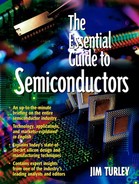Dynamically Reconfigurable Chips
A new kind of custom chip has recently become available. The technology is still a little experimental and some of the initial claims seem a bit wild, but if these dynamically configurable chips live up to even some of their promise, they might become a big part of the overall microprocessor and custom-chip businesses.
The concept is called dynamically reconfigurable logic, although it's known by many other names as well: Reconfigurable computing, adaptive logic, and self-adaptive processing are all terms that are bandied about. Whatever you call it, the idea is certainly interesting.
About Dynamically Reconfigurable Logic
One thing all ASICs have in common is that once the chip is built, it can never be changed. Because it takes nearly a year to design an ASIC, that's a difficult forecasting job for somebody. Technology can change, markets can change, and competitors can do shifty things in that time. However, all chip makers face the same problem. Making chips is no different from making cars: Once the product rolls off the assembly line, it's done.
Field-programmable chips alter that equation, allowing engineers (or even sophisticated customers) to reprogram the chips after they've shipped. FPGAs were thus supposed to herald a new era of fluid logic, chips that change over time to meet changing conditions. With few exceptions, though, that doesn't happen. Chip designers almost never redesign an FPGA once it's out the door and in the customer's hands. All those field-programmable chips might just as well be fixed silicon.
Dynamically reconfigurable logic aims to change all that. These are chips designed from the outset to change, and change frequently. It takes about a minute to erase a big FPGA and reprogram it, but dynamically reconfigurable chips can change in almost no time at all. Thousands or millions of times each second, these chips can change their stripes, becoming different chips at different times.
The idea is certainly tempting. A dynamically reconfigurable chip could act as a kind of universal logic chip, performing whatever task is required. One moment it's a microprocessor, the next moment it's a network chip, and after that it's a graphics accelerator. The companies making these chips have names like Chameleon and Quicksilver that emphasize their mutability. At the extreme, products could be designed with nothing but one big chip in the middle. Dynamically reconfigurable chips could be cheaper than almost every other kind of chip because one dynamic chip could replace dozens of different old-fashioned, fixed-function chips.
At least that's the theory. The reality appears to be creeping toward that point, but the hurdles are still significant. For starters, customers are having a hard time grasping the concept. It's so outlandish that newcomers have a hard time imagining how these chips might be used. It also requires engineers to design multiple different chips and share them in a single physical package, something no one currently is trained to do. If the dynamic chip is also a processor, which it often is, how do you program it? New programs and programming tools have to be devised to deal with a processor that changes its instruction set, registers, buses, and resources moment by moment.
Finally, it threatens the status quo. Engineers are like members of any other profession, so they tend to protect their skills and defend their hard-fought experience. Something entirely new upsets the apple cart, turning all the engineers on a team into inexperienced beginners. Those with the most experience will naturally also be in the position of most authority and put up the most resistance.
